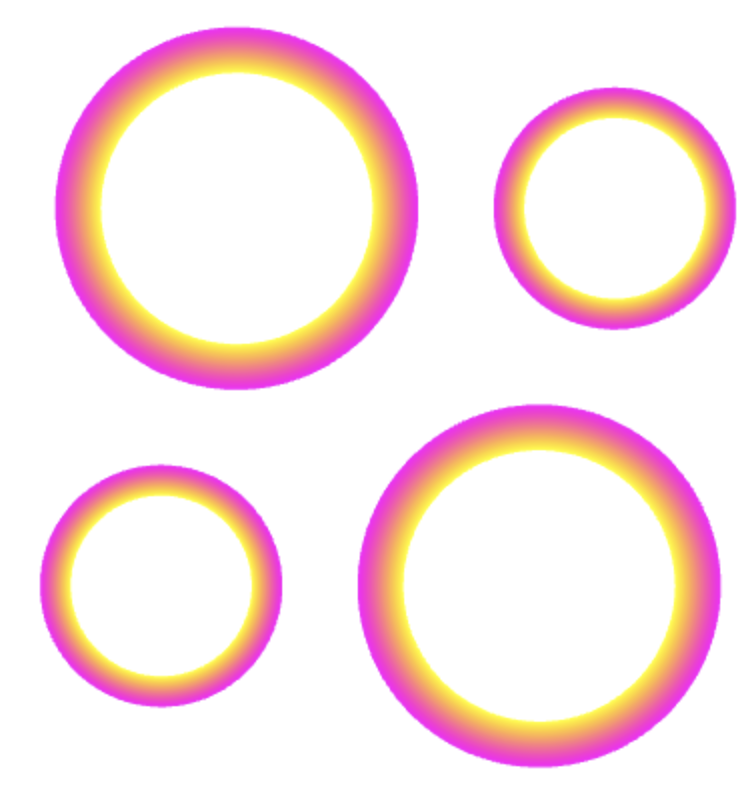Lecture: Triangles
Dear students:
The games we play are generally not made of dots and lines. They are made of triangles. Today we start exploring triangles. Thanks to the versatility of vertex buffers, rendering them is not all that different than rendering other primitives. We'll also have a look at interpolating values across a triangle and moving our models around with transformations.
Lost Vertex
Let's do another lost vertex exercise. Suppose you know that the shape is an isosceles triangle. But you only have its first two vertices as you wind around its perimeter:
Can you compute the third? If so, write down an algorithm. Then we'll render it as a triangle.
Suppose you know that the shape is an equilateral triangle. Can you compute the third?
Annulus
There are a couple of other big ideas you read about that we should explore together, especially interpolation and transformations. Let's explore them by reverse engineering this scene:

TODO
Here's your list of things to do before we meet next:
See you next time.
Sincerely,

P.S. It's time for a haiku!